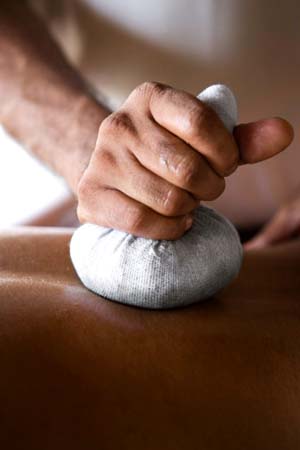Nov 29, 2025
Nov 29, 2025
 According to Ayurveda, internal balance is the key to perfect health. This natural internal state of balance is described in terms of an important Ayurvedic concept - the doshas. Each person is born with a unique combination of the three doshas, Vata, Pitta and Kapha.
According to Ayurveda, internal balance is the key to perfect health. This natural internal state of balance is described in terms of an important Ayurvedic concept - the doshas. Each person is born with a unique combination of the three doshas, Vata, Pitta and Kapha.
"The Ayurvedic theory of disease and healing has a very solid scientific base," says Dr. John Peterson, Maharishi Ayurveda physician from Muncie, Indiana. "After all, human beings are part of the universe, and are composed of the same five elements as everything in creation. Quantum physicists call these five elements the five basic spin types. The ancients called them space, air, fire, water and earth. Ayurveda describes the three governing principles or doshas, Vata, Pitta and Kapha, as combinations of these elements. Vata comes from space and air. Pitta comes from fire and water. Kapha comes from water and earth. The nature of these elements gives us a clue about the properties of the doshas. Vata governs movement, Pitta governs heat, metabolism and transformation, and Kapha governs structure and fluid balance. Even children can quickly come to understand themselves, their friends and all of nature in terms of Vata, Pitta and Kapha. It is the interplay among the three doshas that determines the health of a living being."
More About Vata
Vata governs all movement in the mind and body. It controls such things as blood flow, elimination of wastes, breathing and the movement of thoughts across the mind. Since Pitta and Kapha cannot move without it, Vata is considered the leader of the three Ayurvedic principles in the body.
These are the sub-categories or sub-doshas under Vata:
More About Pitta
Pitta governs bodily functions concerned with heat and metabolism, and directs all biochemical reactions and the process of energy exchange. For example, Pitta controls how we digest foods, how we metabolize our sensory perceptions, and how we discriminate between right and wrong. Pitta governs the important digestive "Agnis" or fires of the body.
Pitta dosha is further divided into the following sub-doshas:
More About Kapha
Kapha governs the structure and cohesion of the organism. It is responsible for biological strength, natural tissue resistance, and proper body structure. It also governs lubrication in the mind and body. It controls weight, growth, lubrication for the joints and lungs, and formation of all the seven tissues: nutritive fluids, blood, fat, muscles, bones, marrow and reproductive tissues.
These are the sub-doshas of Kapha:
Restoring Balance
An individual may have a natural predominance of one or more doshas. These doshas need not be present in equal proportion in an individual to ensure balance, but they need to be functioning in harmony with each other.
According to Ayurveda, disorders stem from an excess of a dosha or a shortage of a dosha, whereas maintaining balance of the doshas results in good health. For example, when Pitta is in balance in an individual, digestion is normal, but an aggravated Pitta can result in ulcers and acid indigestion.
Over time, the natural balance of the doshas in an individual can be disturbed by a number of factors, such as improper diet, poor digestion, high day-to-day stress levels and environmental pollution and chemicals. The Ayurvedic approach to health is all about restoring this natural balance, through dietary and lifestyle recommendations as well as herbal formulations. The goal is not to treat surface symptoms, but the underlying imbalance, thus creating long-term health and a strong immune system.
Disclaimer:
Information provided in this article is for the sole purpose of imparting education on Ayurveda and is not intended to diagnose, treat, cure or prevent any disease. If you have a medical condition, please consult your physician.
27-Feb-2002
More by : Vaidya Rama Kant Mishra